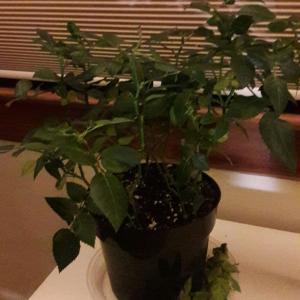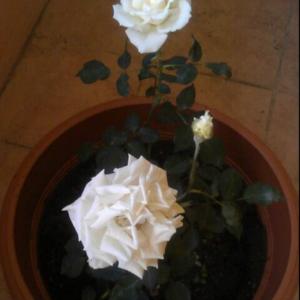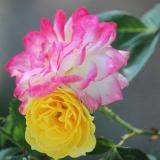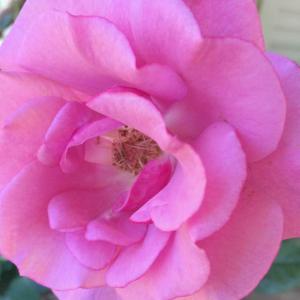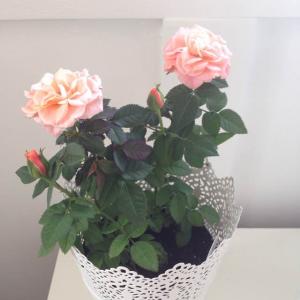文章
lenny
2017年03月15日
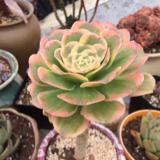

When spring comes and the ground is thawed, it is time to start planting your rose garden. Roses have been a cherished aphrodisiac since biblical times. They have been around for over 3000 years, yet they still hold a particular mystery and fascination, not to mention the fact that they just look and smell good!
One of the most important rules of growing roses is to plant the rose bush in an area that receives around 4 to 6 hours of sunlight every day.
It is preferable not to plant too many trees or other plants around the rose bush because most of these are likely to either mix with the rose or stifle it’s growth. If you are replacing an old rose bush, approximately 1 1/2 cubic feet of old soil should be removed, and fresh soil added to replace it. When positioning your rose in the garden or landscape, consider the growth habit of the rose.
For example, place climbers and ramblers along fences, trellises, or next to arches or pergolas. This location offers them free range of growth, and optimal potential for the showiest blooms.
Roses also look beautiful in island garden beds interplanted with perennials. Miniature roses make great edging plants in front of their taller cousins. Planted singly, shrub roses make excellent specimen plants or they can be clustered to make a flowering hedge. You can also use them to camouflage unsightly garden objects.
Dig a hole large enough for the root mass and loosen the bottom of the hole. You should add bone meal, which is a slow acting source of phosphorus that leads to healthy root growth in the rose plant.

3
2
文章
Lisa
2017年02月20日

There are literally hundreds of types of #roses that you can grow in your garden. With such a selection to choose from, it can be extremely difficult to choose the rose that’s right for you. To make this task a bit easier, We’ve outlined a few important factors you should consider, and explained some of the different types of roses to aid in your search.

Tips on Choosing Roses
1. Color may seem trivial at first glance, but it’s usually an important factor to those that want to grow roses. Usually it is simply a matter of personal preference, but you may want to try creating a complimentary color palette for your rose garden.
2. The final growth height of a rose should be considered as it would be unattractive to grow roses that are higher than the area of the garden that it grows in. Some roses can grow to be as high as 20 feet.
3. If you live in an area that is prone to cold winters, you would certainly want a rose that could survive during the off season.
4. If certain fragrances invoke an allergic reaction, you’ll want to plant roses that have a softer fragrance than the others.
5. It’s smart gardening to learn what the advantages and disadvantages would be if you were to choose certain roses over others.
6. You will want to consider the size of your garden space, so that you can ensure proper exposure to the air and other elements as well.
7. If you are hoping to make your roses into bouquets, you will want to know if they can be cut. Hybrid teas can. Some roses will fall apart at the petals if they are cut.
8. You should also consider what other types of flowers or plants you intend on adding to the rose’s environment. You want to add plants and flowers that will not create a damaging environment to your rose’s ecosystem.

Some Common Types of Roses
After you get a sense of the type of roses that you would like to plant, you’ll naturally want to know which types of roses best fit with your planting ideas. There are too many varieties of roses to list here, but this list covers some of the most popular. You should consult your nearest garden center for advice on whether your choice is fitting to your garden’s abilities.
Landscape roses – Landscape roses are great for the novice gardener. They are disease resistant, and require a little bit less maintenance. Hybrid teas are not good for the novice.
Climbing Roses – These roses are different from the regular roses that are planted as they are trained to grow upward like vines. Most people like to use these for trellises, or buildings. Some of them are hybrid teas, wichuraine, and large flowered climbers. They are a beautiful addition to the look of one’s house.
Shrub Roses – Shrub roses like the beautiful rugosa are both long blooming, and disease resistant. These are also great for the novice planter. They are gorgeous even when they are not in bloom because the foliage is so pretty.

Old Garden Roses – These roses are not very good for those with severe allergies to strong fragrances because they have a strong fragrant odor. However, they are disease resistant and continue to bloom for months at a time.
The Modern Rose – These are very special roses because they are the result of cross breeding the hybrid tea with the polyanthus. They are also referred to as Floribunda. They are a beautiful combination of the best those two flowers have to offer. They are long blooming, fragrant, and they are great for cutting.
Miniature Roses – Miniature roses are exactly what they sound like. They have all of the fragrance and beauty of a regular rose, but they have smaller blooms. These particular roses are great for indoor planting.
While note all inclusive, this article should be a great help in getting you started on the way to having your very own, gorgeous rose garden.

Tips on Choosing Roses
1. Color may seem trivial at first glance, but it’s usually an important factor to those that want to grow roses. Usually it is simply a matter of personal preference, but you may want to try creating a complimentary color palette for your rose garden.
2. The final growth height of a rose should be considered as it would be unattractive to grow roses that are higher than the area of the garden that it grows in. Some roses can grow to be as high as 20 feet.
3. If you live in an area that is prone to cold winters, you would certainly want a rose that could survive during the off season.
4. If certain fragrances invoke an allergic reaction, you’ll want to plant roses that have a softer fragrance than the others.
5. It’s smart gardening to learn what the advantages and disadvantages would be if you were to choose certain roses over others.
6. You will want to consider the size of your garden space, so that you can ensure proper exposure to the air and other elements as well.
7. If you are hoping to make your roses into bouquets, you will want to know if they can be cut. Hybrid teas can. Some roses will fall apart at the petals if they are cut.
8. You should also consider what other types of flowers or plants you intend on adding to the rose’s environment. You want to add plants and flowers that will not create a damaging environment to your rose’s ecosystem.

Some Common Types of Roses
After you get a sense of the type of roses that you would like to plant, you’ll naturally want to know which types of roses best fit with your planting ideas. There are too many varieties of roses to list here, but this list covers some of the most popular. You should consult your nearest garden center for advice on whether your choice is fitting to your garden’s abilities.
Landscape roses – Landscape roses are great for the novice gardener. They are disease resistant, and require a little bit less maintenance. Hybrid teas are not good for the novice.
Climbing Roses – These roses are different from the regular roses that are planted as they are trained to grow upward like vines. Most people like to use these for trellises, or buildings. Some of them are hybrid teas, wichuraine, and large flowered climbers. They are a beautiful addition to the look of one’s house.
Shrub Roses – Shrub roses like the beautiful rugosa are both long blooming, and disease resistant. These are also great for the novice planter. They are gorgeous even when they are not in bloom because the foliage is so pretty.

Old Garden Roses – These roses are not very good for those with severe allergies to strong fragrances because they have a strong fragrant odor. However, they are disease resistant and continue to bloom for months at a time.
The Modern Rose – These are very special roses because they are the result of cross breeding the hybrid tea with the polyanthus. They are also referred to as Floribunda. They are a beautiful combination of the best those two flowers have to offer. They are long blooming, fragrant, and they are great for cutting.
Miniature Roses – Miniature roses are exactly what they sound like. They have all of the fragrance and beauty of a regular rose, but they have smaller blooms. These particular roses are great for indoor planting.
While note all inclusive, this article should be a great help in getting you started on the way to having your very own, gorgeous rose garden.
0
0
文章
TwainLeo
2017年02月20日

When spring arrives, and the ground is thawed, it is time to start planting your #rose garden. Roses date back to biblical times and have been a considered a cherished aphrodisiac then and still are today. Roses hold particular mystery and fascination, not to mention the fact that they just look and smell good!
Roses require 4 to 6 hours of sunlight everyday. It is preferable not to plant too many trees or other plants around the rose bush because most of these are likely to either mix with the rose or stifle its growth. If you are replacing an old rose bush, approximately 1 1/2 cubic feet of old soil should be removed and fresh soil added to replace it.

When positioning your rose in the garden or landscape, consider the growth habit of the rose. For example, place climbers and ramblers along fences, trellises, or next to arches or pergolas. This location offers them free range of growth, and optimal potential for the biggest and showiest blooms.
Roses also look beautiful in island beds mixed with perennials.
Miniature roses make great edging plants in front of their taller cousins.
Planted singly, shrub roses make excellent specimen plants or they can be clustered to make a flowering hedge. You can also use them to camouflage unsightly garden objects.

Dig a hole large enough for the root mass and loosen the bottom of the hole. You should add bone meal, which is a slow acting source of phosphorus that leads to healthy root growth in the rose plant. Special care should be taken with the planting depth. It varies according to the climate you live in. If you live in a colder area, plant a bit deeper and consult with the people growing roses in your area. If you are buying potted roses, you should plant them about 1 inch deeper than their potted level.
The plant should be placed in the hole carefully, and the hole refilled with soil, covering the roots completely. Before making the final covering, water the rose plant and let it absorb the water. After this, water the plant more and mound the soil about 6 inches high. The dome will keep the stems from drying out until the plant is rooted. Gradually remove the excess soil as the leaves open.
The best time to plant roses varies depending on the winter temperature. Where temperatures do not drop below -10 degrees F; either fall or spring planting is satisfactory. If you live in an area where winter temperatures go below -10 degrees F, spring planting is preferred. Plants should be planted in a dormant condition if purchased bare root, but container-grown plants may be planted throughout the growing season.
Spacing of the rose plant is highly influenced by the temperature. In regions where winters are severe, the rose plant does not grow as large as in mild climates. Taking this into consideration, hybrid tea roses should be spaced 1 1/2 to 3 feet apart. Large vigorous growers, such as hybrid perpetual need 3 to 5 feet of space, and the climbers need from 8 to 10 feet of space.
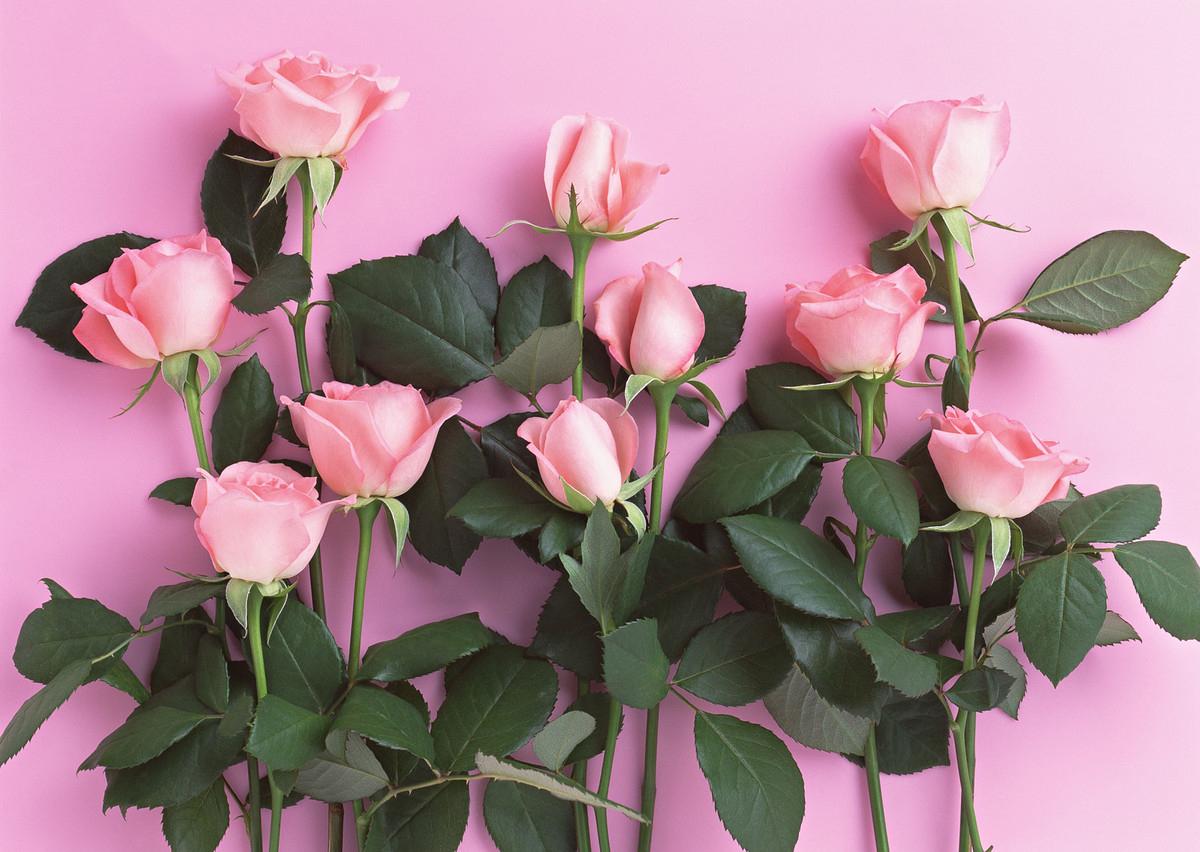
If the winter temperature is below 10 degrees F, roses can grow healthy if proper care is taken. The gardener must prepare for that cold, wet reality as he revels in the summer air conditioning.
In zones 7 and colder, the roses enjoy their last fertilization of the season by August 15 to limit the emergence of new rose canes, which will almost certainly not survive the winter.
Roses require 4 to 6 hours of sunlight everyday. It is preferable not to plant too many trees or other plants around the rose bush because most of these are likely to either mix with the rose or stifle its growth. If you are replacing an old rose bush, approximately 1 1/2 cubic feet of old soil should be removed and fresh soil added to replace it.

When positioning your rose in the garden or landscape, consider the growth habit of the rose. For example, place climbers and ramblers along fences, trellises, or next to arches or pergolas. This location offers them free range of growth, and optimal potential for the biggest and showiest blooms.
Roses also look beautiful in island beds mixed with perennials.
Miniature roses make great edging plants in front of their taller cousins.
Planted singly, shrub roses make excellent specimen plants or they can be clustered to make a flowering hedge. You can also use them to camouflage unsightly garden objects.

Dig a hole large enough for the root mass and loosen the bottom of the hole. You should add bone meal, which is a slow acting source of phosphorus that leads to healthy root growth in the rose plant. Special care should be taken with the planting depth. It varies according to the climate you live in. If you live in a colder area, plant a bit deeper and consult with the people growing roses in your area. If you are buying potted roses, you should plant them about 1 inch deeper than their potted level.
The plant should be placed in the hole carefully, and the hole refilled with soil, covering the roots completely. Before making the final covering, water the rose plant and let it absorb the water. After this, water the plant more and mound the soil about 6 inches high. The dome will keep the stems from drying out until the plant is rooted. Gradually remove the excess soil as the leaves open.
The best time to plant roses varies depending on the winter temperature. Where temperatures do not drop below -10 degrees F; either fall or spring planting is satisfactory. If you live in an area where winter temperatures go below -10 degrees F, spring planting is preferred. Plants should be planted in a dormant condition if purchased bare root, but container-grown plants may be planted throughout the growing season.
Spacing of the rose plant is highly influenced by the temperature. In regions where winters are severe, the rose plant does not grow as large as in mild climates. Taking this into consideration, hybrid tea roses should be spaced 1 1/2 to 3 feet apart. Large vigorous growers, such as hybrid perpetual need 3 to 5 feet of space, and the climbers need from 8 to 10 feet of space.

If the winter temperature is below 10 degrees F, roses can grow healthy if proper care is taken. The gardener must prepare for that cold, wet reality as he revels in the summer air conditioning.
In zones 7 and colder, the roses enjoy their last fertilization of the season by August 15 to limit the emergence of new rose canes, which will almost certainly not survive the winter.
1
0
文章
Hande Salcan
2017年02月16日

Once July and August roll around in the garden, it’s really common for the “bloom to come off the rose” so to speak. In other words, our gardens can get a little bedraggled, and our gardening inspiration can get a little tired… Here are some great tips for your tired summer garden to freshen the look, and brighten your gardening spirit as well!

It’s Time for a New Do
Midsummer many plants have already bloomed, and tend to get a little lanky with the hot days. Almost every flower and herb can use a good haircut right about now. Spring and early summer bloomers can be cut back to one third their height. Fall bloomer, just cut a couple inches off the tops to help them grow more compactly and set more buds for fall blooming. If your plants are in bloom right now, take a pair of clippers and trim off the dead and dying blooms. This is called “deadheading” and will force the plant into setting more flowers, not setting seed. Give your plants a good deep watering with a liquid fertilizer and wait for more blooms and refreshes foliage in a couple of weeks!
Green it Up!
Lawns need another dose of fertilizer in July. Pick a cool evening and consider using an organic fertilizer. They build the soil and create a healthier lawn long term. Not to mention, they are better for the environment and not harmful to kids and pets.

Go Surfing
Online that is. You need an inspirational project to remind you of the connection you have with the living things in your garden. Pinterest is the place to find great ideas. Even if you never get one of the projects done, the time spent looking at photos of beautiful outdoor spaces will help you feel inspired to spend more time in yours.
Beat the Heat
If it’s too hot outside to be in the garden like you were in the spring, don’t use that as an excuse. Schedule time for yourself to have breakfast or tea in the garden earlier in the day, or build a fire pit and plant fragrant containers to enjoy it at night.
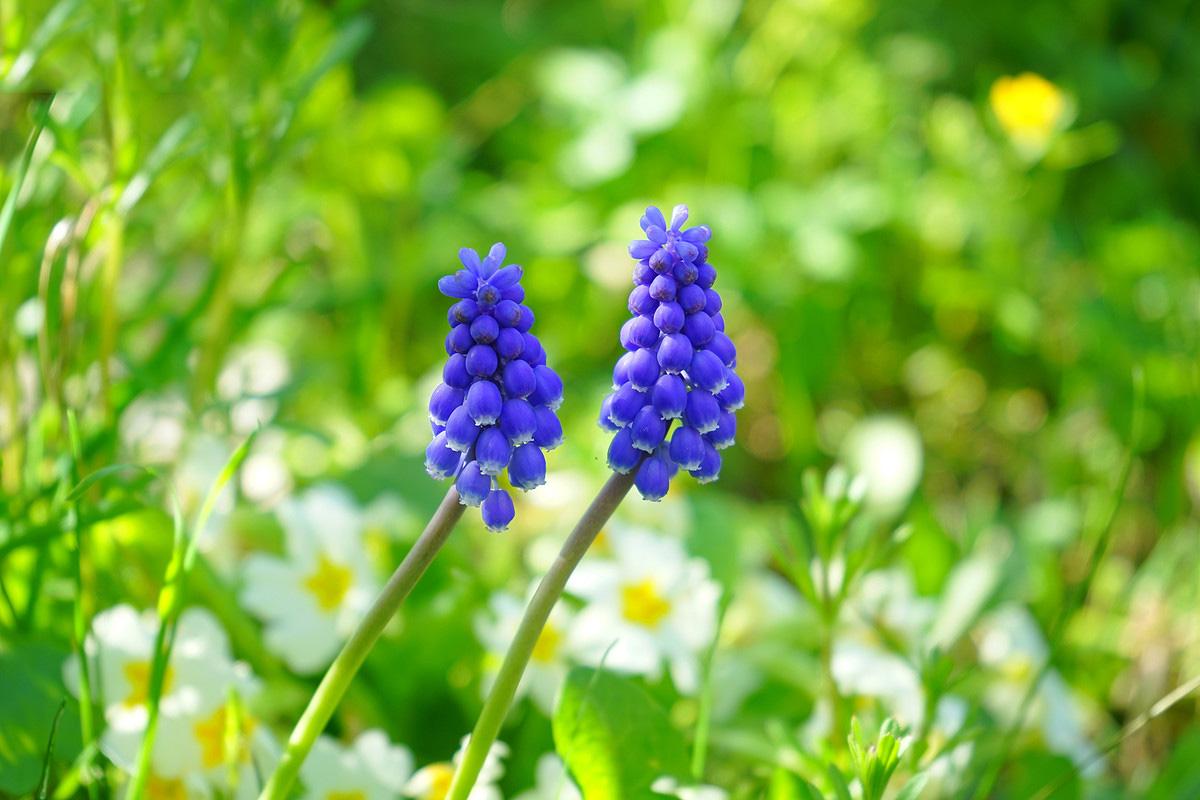
Color your World
Many flowering perennial plants are in a down cycle in midsummer, so pick up some inexpensive blooming annuals and pot them up for a quick and bright pop in focal areas of your garden. Check out your local nursery for what works best in your area, but Verbena is one of my favs… takes the heat and blooms like crazy! If you have planters with spring blooming pansies that have seen better days, switch them out for new annuals better equipped to take the heat.
So don’t let the midsummer gardening blues hit you or your garden. Use these tips to revitalize your summer garden and keep you inspired. Fall is right around the corner, and what a beautiful time in the outdoors!

It’s Time for a New Do
Midsummer many plants have already bloomed, and tend to get a little lanky with the hot days. Almost every flower and herb can use a good haircut right about now. Spring and early summer bloomers can be cut back to one third their height. Fall bloomer, just cut a couple inches off the tops to help them grow more compactly and set more buds for fall blooming. If your plants are in bloom right now, take a pair of clippers and trim off the dead and dying blooms. This is called “deadheading” and will force the plant into setting more flowers, not setting seed. Give your plants a good deep watering with a liquid fertilizer and wait for more blooms and refreshes foliage in a couple of weeks!
Green it Up!
Lawns need another dose of fertilizer in July. Pick a cool evening and consider using an organic fertilizer. They build the soil and create a healthier lawn long term. Not to mention, they are better for the environment and not harmful to kids and pets.

Go Surfing
Online that is. You need an inspirational project to remind you of the connection you have with the living things in your garden. Pinterest is the place to find great ideas. Even if you never get one of the projects done, the time spent looking at photos of beautiful outdoor spaces will help you feel inspired to spend more time in yours.
Beat the Heat
If it’s too hot outside to be in the garden like you were in the spring, don’t use that as an excuse. Schedule time for yourself to have breakfast or tea in the garden earlier in the day, or build a fire pit and plant fragrant containers to enjoy it at night.

Color your World
Many flowering perennial plants are in a down cycle in midsummer, so pick up some inexpensive blooming annuals and pot them up for a quick and bright pop in focal areas of your garden. Check out your local nursery for what works best in your area, but Verbena is one of my favs… takes the heat and blooms like crazy! If you have planters with spring blooming pansies that have seen better days, switch them out for new annuals better equipped to take the heat.
So don’t let the midsummer gardening blues hit you or your garden. Use these tips to revitalize your summer garden and keep you inspired. Fall is right around the corner, and what a beautiful time in the outdoors!
1
0
成长记
Albion83
2016年09月07日

I new added a "Pink rose" in my "garden"
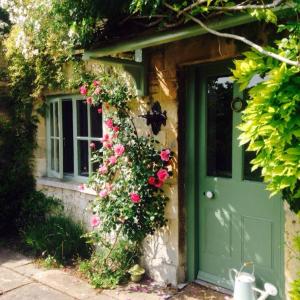

6
0
Albion83:Thank you very much. It's call Mushroom Cottage
Erin:@Albion83 I bet you had a great summer!really lovely house
Albion83:Thank you. That's my front door back in June
格桑花:amazing!






